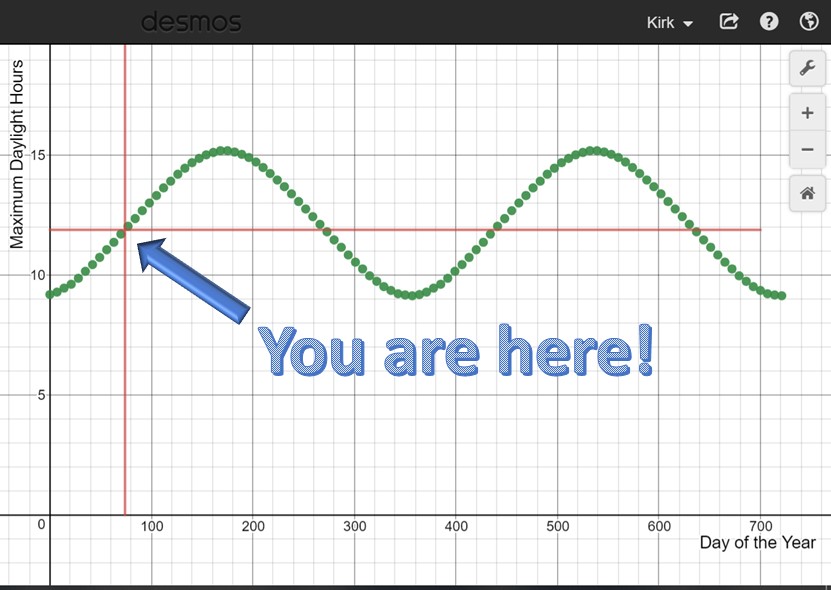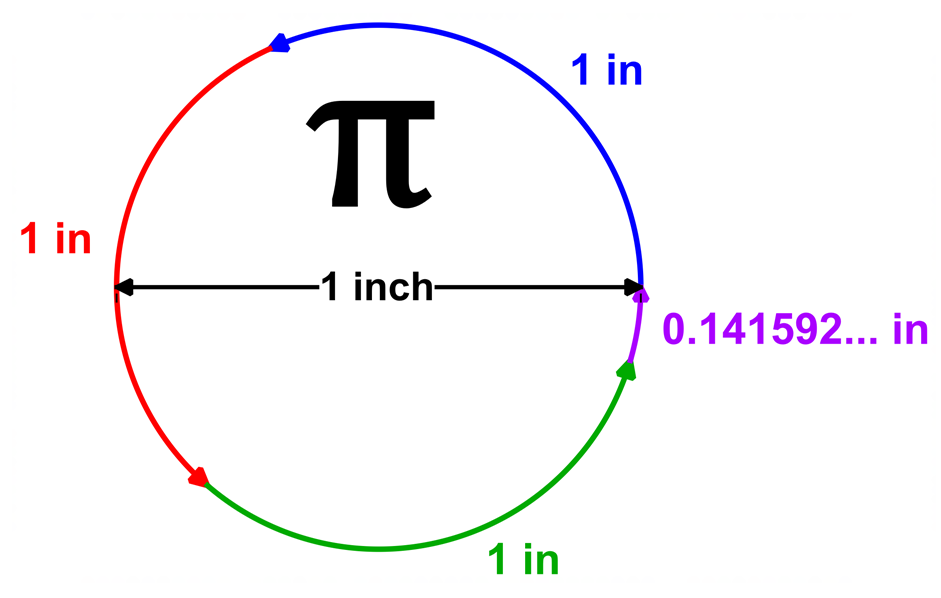Ahh, March! We’re finally at the inflection point (almost) on the sunlight curve, which means we are picking up daylight at a greater rate than at any other time of the year.

Temperature will need to wait for another month before it climbs at its most rapid pace. It’s a somewhat remarkable fact that the daylight and temperature sinusoidal curves have just about a month offset from each other (temperature shifted one month forward from daylight).
I love seeing so much of the world through a mathematical lens. Speaking of which, since we’ve hit the midpoint of March we have a whole bunch of add-ons to tell you about. Let’s get into them.
For Common Core Algebra I Add-Ons we bring you a practice lesson and a Form C assessment, both for Unit #8 – Quadratic Functions and Their Algebra. We created a Lesson #6.5.Finding the Zeros of a Quadratic.Practice which provides students more work with finding and thinking about the zeros of a quadratic. This is a great lesson for students to get a practical application of the zero product law and connections between factors and zeros. We also bring you the third assessment for this unit in our Unit #8 Formative Assessment.Form C.
The Common Core Geometry Add-Ons for this month contain a Form B assessment and our first progress quiz in a unit. First, we have the Unit 8 – Right Triangle Trigonometry Form B Assessment. It’s always nice to have a makeup for this test given the diagram work inherent in trig problems. Then, we bring you a Unit 9 – Circle Geometry Progress Quiz to be given after Lesson 6. This unit we felt was particularly long with a particularly great amount of very new material for them. So, we felt that a quiz at this point gives the teacher a good sense for where students are at on this challenging material.
Common Core Algebra II Add-Ons also bring two assessments, both for Unit 10 – Polynomial and Rational Functions. First, we have a Progress Quiz that covers only the polynomial material for the unit (the first four lessons). We felt that teachers might want to assess this material in isolation before moving onto the rational expressions work. We also have a Unit 10 Form C Assessment.
Finally, Algebra 2 with Trigonometry Add-Ons contain a practice lesson and a Form B assessment. These are both for Unit 10 – Exponential and Logarithmic Functions. First we bring you Lesson #7.5 – Log Law Practice. We all know how strange the log laws are when first exposed to them. This lesson gives lots of extra practice in manipulating logarithmic expressions using the laws. We also bring you the Unit 10 Form B Assessment.
In other news, I had a fantastic visit with the students and teachers from Edward R. Murrow high school in Brooklyn.

I got to present to about 3,000 of their students (or so I was told) over the span of the day. I did a presentation of some cool math and math history. The reception I and the presentation got from the kids was just amazing. They took part when I asked them to play around with some problems and just overwhelmed me with their positive attitudes and energy. The fact that it was a Friday may have helped, but I have to think it was more about how the culture of their school and especially their math teachers encourages them to explore ideas in their learning that sometimes go outside of the box.
Thank you, thank you, thank you students and teachers at Murrow!!!
Oh, and it was Pi Day yesterday, one of our few mathematical holidays. I love the number Pi and find it fascinating in so many ways. It’s existence as a number is obvious from the simple perspective that all circles are similar and thus the ratio of their circumference to diameter would have to be a constant. The fact that it is a number slightly greater than 3 and that it is irrational is fantastic. I took a moment to visualize its size compared to a circle whose diameter was 1 and produced this graphic on FX Draw:

In other news, we sent out an announcement recently about our new line of middle school curricula. We are producing Math 6, Math 7, and Math 8 curricula , similar to what we have for high school courses. These courses will align to the Next Generation standards that will start to be implemented at the middle school level in the fall of 2020. We are posting our Beta versions of the texts as we finish them and their first edits. We already have Math 6 posted:
N-Gen Math™ 6
And here is its super cool cover, by the awesome Michael Frey. (To see more of Michael’s work just click on his name.)

Wait until you see the ones for Math 7 and Math 8. We plan to post the Beta version of Math 7 as early as May, but more likely at the beginning of June. Math 8 will not be available until September or October of next fall. Next year we will be recording videos for the three courses and creating more resources for them, like the answer keys and other items.
For now, I think that just might be enough. Have a great beginning of your Spring everyone.
Kirk
